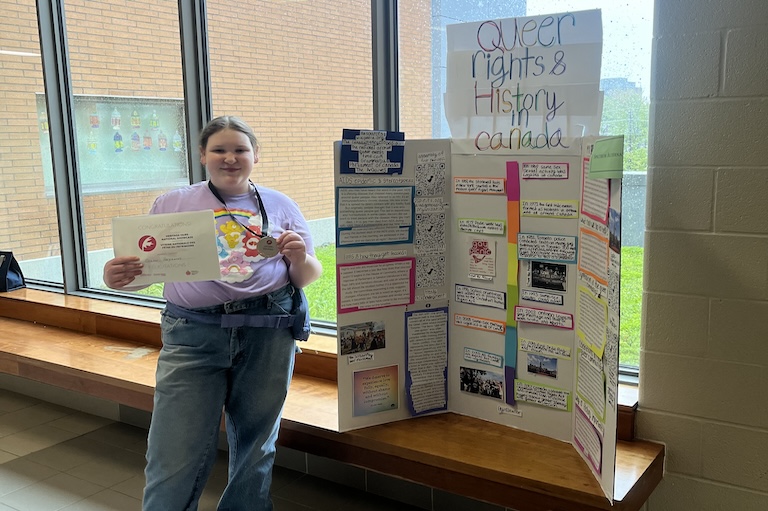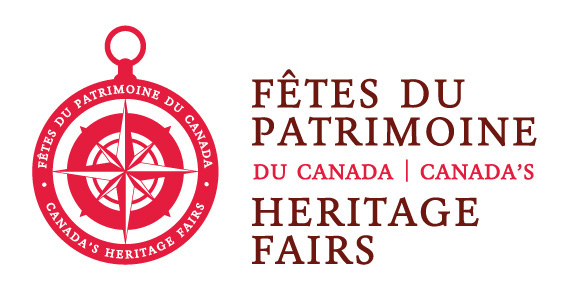Eleanor H.

Queer Rights and History in Canada
Eleanor G.
Toronto District School Board Regional Heritage Fair
Toronto, ON
Queer history is a fascinating topic that deserves more attention in fairs like these and our curriculum. Since 1969, Canada has made significant progress in queer rights. From decriminalizing same-sex sexual activity to legalizing same-sex marriage to adding rights related to gender identity and expression in the Human Rights Act and Criminal Code, alot of changes has been made. However, history isn't only rainbows and sunshine, for example, the bathhouse raids and ongoing stereotypes, like the ones historically surrounding the AIDS epidemic. Symbolism plays a crucial role in the Queer community. Whether it was to discreetly signal your queerness like in the past, or today to be loud and proud. For example, the pink triangle was originally was a symbol of hate, but now it symbolizes pride. Celebrations and symbolism go hand in hand, celebrations are so important because it's not always easy to be queer so we need a space to have fun, like the first Pride in Toronto, which originated in 1973 as the gay picnic. But now has blossomed into the Toronto Pride we know and love today. It’s also always vital to recognize Indigenous contributions now and in all Canadian history. Especially because queer Indigenous people have not always been accepted in the 2SLGBTQIA+ community. Despite progress, stereotypes and discrimination persist, highlighting the importance of Indigenous and all queer identity and history, so The work is not finished; we must continue to strive for equality and a fair world for all.
What sources and evidence did you consult for your project? What different perspectives did they provide on your topic?
I used many sources including the Canadian Encyclopedia, which helped me connect Indigenous people's history into my project. I used CBC for articles on many events, such as the first Pride flag raised on Parliament Hill. I used The ArQuives for photos as well as information on many things in the timeline. I used the Canadian encyclopedia for the AIDS crisis paragraph as well as the symbolism paragraph. I think looking at different sources from within the queer community and from other places too widened my perspective and helped me fact-check everything I am sharing. I think that if I only used one source, my information would be less accurate.
What is the historical significance of your topic?
Queer history is a large topic that has had a lot of impacts, big and small. Having more rights and feeling safer has changed people's lives entirely from hiding away to being loud and happy! And we change those people's lives by changing laws, which is not a small act. Changing laws is one of the big steps activism can take, as well as changing other people’s and countries’ views. Once one country does something big like making same-sex sexual activity legal, or same-sex marriage legal, others will follow. And you can see that's true because there are only 67 out of 195 countries that have laws against queer sexual activity. It's not great and it can still be improved, but it is much better than it once was. Queer history has changed lives and helped multiple marginalized communities and taking large steps towards an equal world.
Why did you choose this topic?
During my time in the TDSB, I have rarely seen queer topics, especially queer history, talked about in the curriculum. I think people see it as too sexual or mature. That is disappointing and unrepresentative. I wanted to share this topic. It's also something that I am knowledgeable about since I come from the community. I truly think that information is more valuable if it's from someone in that community. I hope that by doing this, I have shared my knowledge and helped shift other perspectives and made it better for kids like me, even just a little bit.

